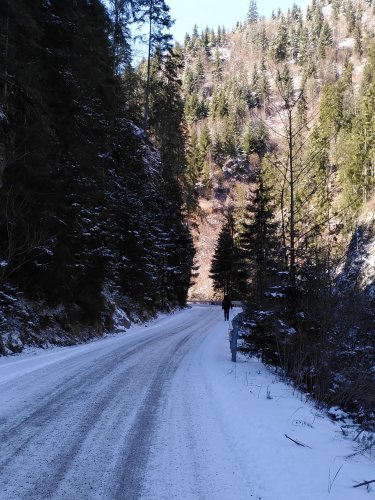
The Teaching of Wandering
One of the practices of the ecocentric model is wandering. Unlike aimless walking, wandering is setting out with intention, but without perhaps a specific destination. The invitation to wander is an invitation to notice - which place is calling me. Which plant, which being, is speaking to me to stop, to explore, to see, to be informed.
Before setting off on our wanderings, we always receive safety instructions - about possible routes (but not too much, so as not to lose the joy of discovery), about the local flora and fauna (to my relief, no bears have been seen in these mountains), about what to do in a crisis situation. Everyone is also given a whistle and instructed to blow it three times if we find ourselves in a situation where help is needed. If someone does not return 30 minutes after the agreed time, the search and rescue process begins. During these days, no one has used the whistle or injured themselves in any way. Muscles, however, reflect my daily sedentariness.
We go on wanderings every day. The first one I stayed on the road, it's so fabulously beautiful! The little road snake winding between the snowy peaks leads me forward, forward, forward. The road itself has absorbed me, and slowly it is also absorbing my thoughts, which, like a swarm of bees, buzz and buzz, and sometimes I can't even decide which thought to tackle first. After half an hour, an hour, all that is left is the road and my footsteps. And the frost that pleasantly tickles my cheeks. On every wander, I am invited to discover a different direction of the sky, both in nature and in myself. It helps me to understand who my inner "guardians" are, what old patterns I follow, and what my own resources are to cope with both internal and external challenges.
I am particularly struck by the question we are invited to ask out loud. If we find an element, a place, a scene in nature that particularly speaks to us, I don't ask - what does it mean? Because that brings me back to my thoughts, trying to work out the answer. Of course, symbols and associations are a great help, and I use them regularly to guide my reflection after activities. However, ecocentrism proposes not to use nature (for answers, therapy, relaxation, entertainment, etc.) but to see it as an equal being. So in this case, the question I carry with me on my wanderings is: what do you want to tell me? In this way I open my senses and try to hear the answer from the resources around me. Yes, the answer can come through the thought process, but the information can also come through my senses, through body sensations or emotions, or through my imagination.
Sometimes it's just a walk. And I really appreciate that too. It gives my body a chance to move, because it is not made for sitting so long and so often, my head has a chance to rest, to let the oxygen visit all my cells. But sometimes, if I answer the call, a simple walk can turn into a rich experience where I meet myself as part of nature, my resources, my inner rivers and rotten trees, new shoots and crazy bird voices that I still have to learn to distinguish.
I wish these experiences of self-discovery for everyone. Especially for young people who are in search of their identity. How much healthier we would all be if we looked for ourselves in nature instead of in societal networks, trends and outdated systems. How to bring this experience to young people in prison, where nature seems distant and unreachable? I am still exploring this question, but I have to admit that last year's leaves already whispered something to me.
Linda, youth worker and wanderer
Project “Re-Wild” is financed by the Erasmus+ Programme of the European Union that in Romania is administrated by the National Agency for Community Programs in the Field of Education and Vocational Training. The article reflects only the opinion of the author